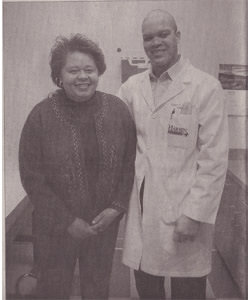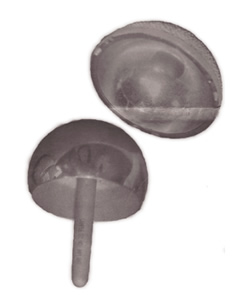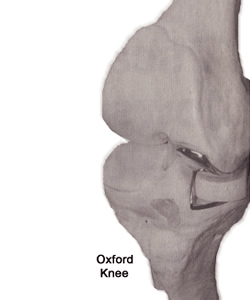Hip Procedure Reduces Required Recovery Time
By Heath Hooper
Rome News-Tribune Staff Writer
HHooper@RN-T.com / 706-290-5263
 Rome is now home to one of the few doctors in the U.S. who can perform the Birmingham Hip Resurfacing procedure, which can drastically reduce recovery time for active individuals facing hip surgery.
Rome is now home to one of the few doctors in the U.S. who can perform the Birmingham Hip Resurfacing procedure, which can drastically reduce recovery time for active individuals facing hip surgery.
Dr. Kenneth C. Sands, who joined the Harbin Clinic in August, is one of only 50 doctors certified in the procedure.
He is now taking part in the training of other doctors in the procedure.
Unlike total hip replacement, individuals can retain more of their original hip with the resurfacing system. The ball of the hip is smoothed, and a metal ball and cap are placed on top of the original bone joint.
“The advantage of this is that for a young person…you save bone stock, so when the person eventually does need a revision surgery – if they do – they can be converted just to a total hip replacement. So it's a stage before total hip replacement,” Sands said.
There’s lasting value in the system, he said.
“As far as our data goes – we have 10 – year data out on this – these are outpacing and outlasting traditional total hips in patients under 55,” he said. The target group for the process is active individuals under the age of 60, he added.
At least one big sports name – bicyclist Floyd Landis – has undergone hip resurfacing. Though Sands didn’t perform Landis’ operation, many of his patients also come from recreational sports, he said. Racquetball and soccer players often seek out the procedure, he added.
The Birmingham system first started in England in 1992. It was originally called the McMinn after its designer Derek McMinn. It became the system Sands uses, called Birmingham hip Resurfacing, after its English birthplace, in 1997.
The procedure only came to the U.S. last year. Sands said he went that year to England to learn the procedure from McMinn himself, and then did follow-up training in Memphis.
 Sand has so far performed about 19 of the procedures. He now averages about one per week, in addition to traditional hip replacements and revisions and total knee replacements.
Sand has so far performed about 19 of the procedures. He now averages about one per week, in addition to traditional hip replacements and revisions and total knee replacements.
Recovery from hip resurfacing is relatively quick, he said. Generally speaking patients spend about two weeks on a walker following the operation, then about two weeks with a cane. They can be back in shape in about 6 weeks, as opposed to three months with a total hip replacement.
The first person that Sands performed the procedure on in Georgia was a woman from Texas. She flew in and had the surgery at Floyd Medical center – where Sands performs all of his hip resurfacings.
The hospital made arrangements for her to receive some discounts for a local hotel.
Because Sands is one of only a few doctors who perform the hip resurfacing patients often travel to Rome for care, and that first stay helped lay the foundation for a particular kind of care for those who come to the area for the procedure.
Realizing travel presents some particular difficulties for patients who may have to stay in Rome for as long as two weeks, Sands and FMC workers asked the woman what kinds of things would have made her stay easier when she finished her time in Georgia.
The woman made up a list of suggestions, Sands said, and he and FMC worked in the intervening months to implement her suggestions for out of town patients.
“Really, Floyd has just Opened up its arms to the concept,” Sands said. “It’s a great benefit for the patients.”
“It’s very important to make a patient feel comfortable, especially if they’re coming from out of town,” he added.
And Sands is also on the cutting edge of other treatments. Recently, he announced the launch of the Oxford Knee procedure, which, like the Birmingham Hip, came out of England.
 The Oxford Knee procedure has been around in Europe for about 15 years, but has again only recently come stateside.
The Oxford Knee procedure has been around in Europe for about 15 years, but has again only recently come stateside.
Unlike total knee replacement, which removes all the knee joint’s surfaces, the Oxford Knee replaces only one side of the joint, allowing patients to retain more of their original parts.
“It basically allows your knee to act in a more normal fashion,” Sands said.
The new procedure is much like it’s hip counterpart, he said.
“It’s somewhat similar to the hip resurfacing in that it’s designed for the active individual,” he said, but the age limits are much broader than with the hip resurfacing.
Like the Birmingham hip, recovery time for Oxford Knee is generally drastically reduced he said.
Last Modified: November 5, 2020